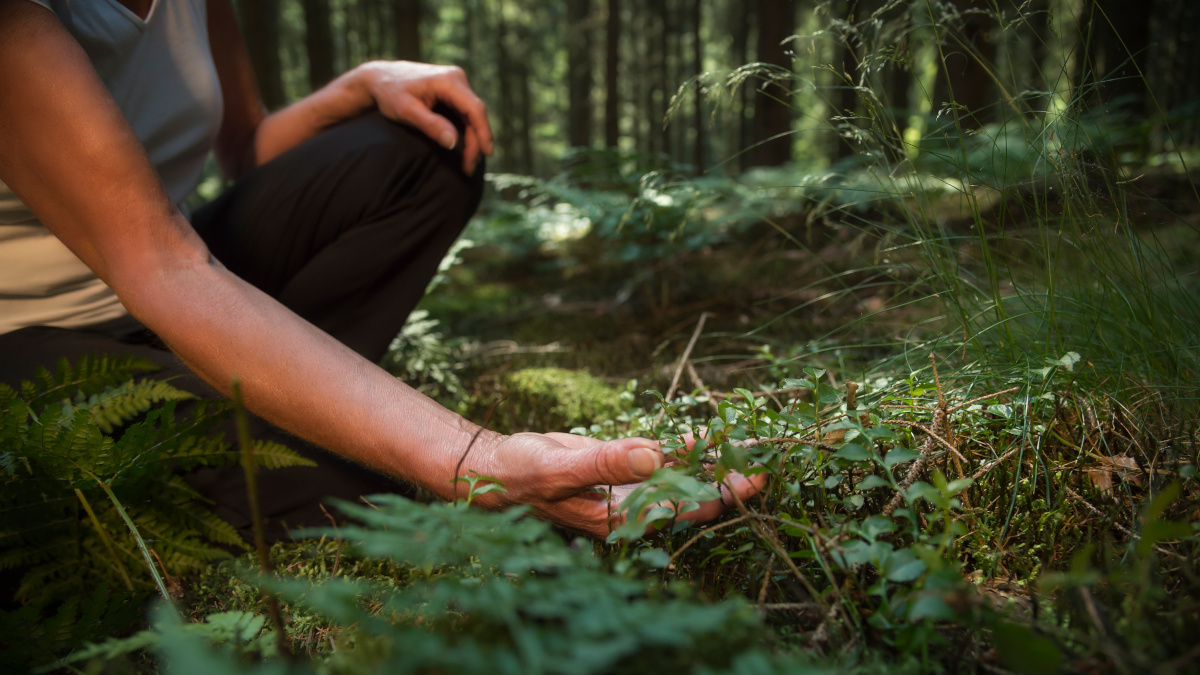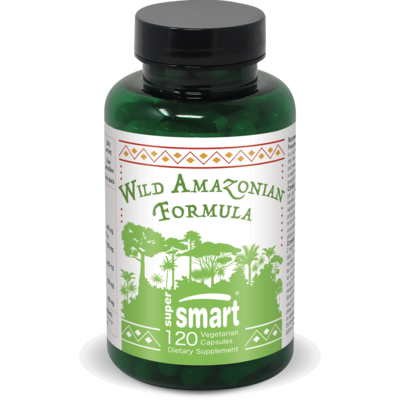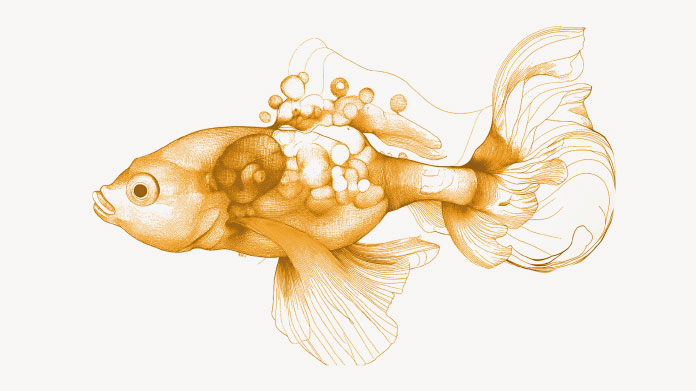Sylvotherapy/forest bathing: benefits, exercises and potential risks
The Japanese art of shinrin-yoku – which translates as forest bathing or sylvotherapy – is becoming increasingly popular. In this article, we explore its benefits, exercises and potential risks.

Sylvotherapy or forest bathing: the Japanese practice of shinrin-yoku
Nature occupies an important place in Japanese culture. Traditionally, it was even believed that the forest contained numerous spirits.
It’s no surprise then that it was in Japan in the 1980s that the practice of shinrin-yoku emerged, since adopted in the West as sylvotherapy or forest bathing (1).
From the Latin for forest, sylva, and ‘therapy’ - a treatment designed to heal - sylvotherapy is, in simple terms, a walk in the forest that can potentially cure many ills.
Interestingly, the practice was developed by doctors in response to a request from the Japanese government who were seeking a natural way of addressing the overwork and intense stress affecting the population at the time.
The benefits of forest bathing
In fact, over the last several years, numerous studies have evaluated the positive health effects of walking in the forest. It seems that sylvotherapy is able to (2) :
- reduce stress ;
- improve heart rate and blood pressure ;
- stimulate the immune system ;
- and even extend longevity.
Though the mechanisms are more psychological than biological, forest bathing appears to expose the body to terpenes produced by trees. When inhaled, these terpenes may encourage the production of serotonin the happiness hormones (3).
Sylvotherapy: exercises
There are actually many ways of practising sylvotherapy, though all are based on the same principle, which is to clear your mind and fully connect with your forest environment, to become engrossed in nature (4):
- take a break and devote some time to immersing yourself in the forest (or a leafy park) in order to disconnect from the noise and bustle of urban life. Appreciate the silence and peaceful atmosphere of the forest;
- avoid focusing on a particular point or subject so that, as with meditation, you become fully aware of your environment ;
- practise slow breathing, at a rate of 6 breaths a minute, to achieve cardiac coherence;
- you can also engage in ‘tree hugging’ which simply means wrapping your arms around your chosen tree for a short time (a few seconds to several minutes) after first spending time observing it.
Sylvotherapy: potential risks
Sylvotherapy in itself does not present any real risks. However, you do need to exercise caution when putting your arms around a tree trunk (5).
- some trees produce allergens, so tree hugging should only be done with certain species such as birch, beech, chestnut or lime, all of which have non-allergenic bark. Oak, for example, is often host to allergenic lichen (Evernia, Parmelia, Cladonia, Usnea).
- some types of moss that grow on tree trunks can also be allergenic. You should therefore take care and monitor your skin for potential eczema reactions after a tree hugging session;
- the biggest risk associated with forest bathing is that posed by the insects they harbour: processionary caterpillars, bees, hornets, chiggers, ants , etc. So before you hug a tree, make sure you’re not also about to hug insects that could sting you!
To benefit from sylvotherapy risk-free, you can of course simply engage in Japanese shinrin-yoku or ‘forest bathing’.
All you need to do for this is to take a weekly walk of at least 90 minutes in the woods, a forest or a leafy park.
This simple and affordable practice helps to boost the immune system, reduce stress, encourage social relations, etc.
If you have young children or dogs, they’ll probably jump at the chance of joining you on a forest trail for the afternoon.
The trees themselves offer benefits too
In addition to the proven benefits of sylvotherapy, the ever-bountiful forest also contains precious remedies which can be found in the trunks, sap, fruit and foliage of their trees.
Let’s not forget, for example, that aspirin was developed from the leaves of the willow tree (Salix genus), hence its name acetylsalicylic acid!
In fact, like willow, many forest trees and plants contain active substances which constitute excellent natural remedies for many ailments.
Oak
Oak contains a number of phenolic compounds such as gallic acid (a tannin), ellagic acid (a polyphenol antioxidant), and most importantly, roburin.
It’s this latter compound which is thought to be responsible for oak’s presumed fatigue-reduction benefits (supported by research) (6). Supplementing with roburin may therefore help to fight fatigue (try, for example, the patented supplement Robuvit®).
Horse chestnut
Though the fruit is poisonous if eaten, the horse chestnut contains a mixture of saponins called aescin, the anti-oedema, anti-inflammatory and venotonic properties of which have been demonstrated in studies (7).
That’s why horse chestnut-based supplements (such as Hemo Comfort, standardised to 20% aescin) are often recommended for people suffering from haemorrhoids.
Wild berries
Chilean Patagonia is home to a little known treasure: the Maqui berry (Aristotelia chinensis). Traditionally used by the Mapuche Indians, Maqui berries are particularly rich in anthocyanins (including delphinidin, which is also found to a lesser extent in passion fruit and pomegranates).
To capitalise on the benefits of anthocyanins, many people choose to take a dietary supplement such as Wild Maqui Berry (standardised to 35% anthocyanins and 28% delphinidin) (8).
Eucalyptus
From the eucalyptus family, it’s usually for the purposes of supporting respiratory health (in the form of an inhalation) that the tree’s essential oil is harvested. Less well-known is the traditional use of Eucalyptus globulus by Australian aborigines to treat rheumatism.
That’s why its essential oil is often found in creams and other topical treatments for the joints (as is the case in Smart Joints Cream, where it is combined synergistically with the Ayurvedic plant Boswellia serrata, as well as coconut oil, vitamin E and glucosamine).
Mushrooms
The bark and roots of trees are also the preferred habitat of mushrooms, natural treasures which have for some years now, been the subject of much scientific interest for their many health benefits.
Shiitake, chaga, reishi, maitake, cordyceps, polyporus, agaricus have thus become important elements of our medicine cabinets. And with justification: rich in polysaccharides (a non-digestible form of fibre), certain mushrooms support the gut microbiota and immune system, hence their inclusion in synergistic formulations (such as Organic MycoComplex, standardised to 30% polysaccharides for maximum benefits) (9).
Exotic plants
As any naturopath will tell you, the Amazon rainforest is treasure trove of rare and rich species, full of medicinal plants which have been used by indigenous populations for thousands of years.
Cat’s claw (a vine with immunostimulant properties), suma root (‘Brazilian ginseng’ with adaptogen properties and reputed to have been traditionally used by warriors to increase their energy), Lapacho bark,soursop and finally Physallis angulata are all much-prized equatorial plants (which are synergistically combined in the supplement Wild Amazonian Formula).
SuperSmart ADVICE
References
- TAKEDA, Atsushi. Forest Bathing (shinrin-yoku) and Human History. The Journal of The Japanese Society of Balneology, Climatology and Physical Medicine, 2017, vol. 80, no 1, p. 4-4.
- KOTERA, Yasuhiro, RICHARDSON, Miles, et SHEFFIELD, David. Effects of shinrin-yoku (forest bathing) and nature therapy on mental health: A systematic review and meta-analysis. International Journal of Mental Health and Addiction, 2020, p. 1-25.
- OTERO, Stephen J. et FAST, Lindsey. Nature Is the Intervention: Shinrin-Yoku and Biomolecules.
- WEN, Ye, YAN, Qi, PAN, Yangliu, et al.Medical empirical research on forest bathing (Shinrin-yoku): A systematic review. Environmental health and preventive medicine, 2019, vol. 24, no 1, p. 1-21.
- N. Crépy, Dermatites de contact chez les professionnels du bois, INRS, Références en santé au travail n°139, septembre 2014
- WEICHMANN, Franziska, AVALTRONI, Fabrice, et BURKI, Carolina. Review of Clinical Effects and Presumed Mechanism of Action of the French Oak Wood Extract Robuvit. Journal of Medicinal Food, 2021, vol. 24, no 9, p. 897-907.
- BAIBADO, Joewel Tarra et CHEUNG, Hon–Yeung. Seed Extract of Horse Chestnut (Aesculus hippocastanum L., 七葉樹) as Effective Medication for Chronic Venous Insufficiency and Other Health Benefits. Looking Back on 2010: A Year Strived for A Higher Standard, 2010, p. 156.
- WATSON, R. R. et SCHÖNLAU, F. Nutraceutical and antioxidant effects of a delphinidin-rich maqui berry extract Delphinol®: a review. Minerva Cardioangiol, 2015, vol. 63, no 2 Suppl 1, p. 1-12.
- MOTTA, Francesca, GERSHWIN, M. Eric, et SELMI, Carlo. Mushrooms and immunity. Journal of Autoimmunity, 2021, vol. 117, p. 102576.
Keywords
4 Days
Availability of quality health…
Availability of quality health supplements and it's wide variety is impressive. Ordering is seamless and shipping even during the holidays is well streamlined.
Mohamad Hussein
18 Days
A Product worth waiting for when not…
A Product worth waiting for when not available and then arriving as a surprise!
DOMINIC
20 Days
On time shipping
On time shipping
GEORGE Verne
22 Days
Ordering was easy and the product was…
Ordering was easy and the product was delivered with no problems. Appreciated that I was notified when it would arrive. Thanks!
MascarC
27 Days
Great customer service - responsive …
I ordered from them and my item was unavailable for sometime. I was super happy when they reactivated my order and shipped my item which arrived very quickly. Great customer service.
Ruth Rueter
28 Days
Super fast shipping
Super fast shipping
Donald Borling
31 Days
Reputable companysearch and the number of…
The research and the number of selection of products.
NAKHJAVAN Shervin
44 Days
The Anti Aromatase is a great product
The Anti Aromatase is a great product. You just need to have constant inventory. Recently this product has been out of stock.
GEORGE Verne
46 Days
Great help on chat
Great help on chat. Knowledgeable and friendly.
Jason Argos
49 Days
Customer service was fast and friendly.
Customer service helped to stop the transaction process of the subscription. I appreciated that.
Greenie
50 Days
I order here due to the high quality of…
I order here due to the high quality of the products and the quick delivery of items - thank you
Barbara J
51 Days
SuperSmart's Eye Pressure supplements: highly recommended!
I purchase SuperSmart's Eye Pressure supplements regularly for over 5 years, and gotta say they are truly a wonderful product for my Glaucoma. Highly recommended if you have eye pain from your Glaucoma.
D. Martinez
56 Days
Quick service
Quick service
MONELL
56 Days
Speedy service.
Speedy service.
ROSENTHAL Marvin
60 Days
Clear website- Efficient
Clear website. Excellent search engine and fast delivery!
Mohamad Hussein







